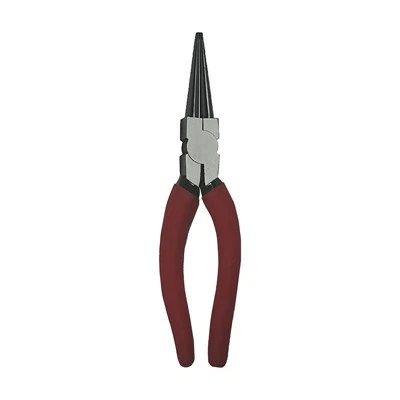When it comes to hand tools, a Mini Pliers Set is an indispensable item for both professionals and DIY enthusiasts. As a supplier of high - quality Mini Pliers Sets, I understand the importance of ensuring the strength and durability of these tools. In this blog, I will share some effective methods on how to test the strength of a Mini Pliers Set.
1. Visual Inspection
Before conducting any physical tests, a thorough visual inspection is essential. Examine the pliers for any visible defects such as cracks, uneven surfaces, or misaligned jaws. A well - made Mini Pliers Set should have smooth edges and a uniform finish. For example, the American Type Round Nose Plier should have a perfectly rounded tip without any sharp edges or rough spots.
Check the joints of the pliers. The pivot point should be tight and smooth, allowing for easy opening and closing. Loose joints can significantly affect the strength and functionality of the pliers. If the joints are too loose, the pliers may not be able to grip objects firmly, reducing their overall strength.
2. Grip Strength Test
One of the most important aspects of a Mini Pliers Set is its grip strength. To test the grip strength, you can use a simple object such as a small metal rod or a wire. Place the object between the jaws of the pliers and gradually apply pressure.
Start with a light pressure and increase it slowly until you reach the maximum force you can apply. Observe how well the pliers hold the object. A strong Mini Pliers Set should be able to grip the object firmly without slipping. If the object slips easily, it indicates that the grip strength of the pliers is insufficient.


You can also test the grip strength at different points along the jaws. The jaws should provide consistent grip strength throughout their length. For instance, the Germany Type Bent Nose Pliers should be able to grip objects firmly at both the tip and the base of the jaws.
3. Torsion Test
Torsion is another factor that affects the strength of a Mini Pliers Set. To perform a torsion test, hold the handle of the pliers firmly and try to twist the jaws in opposite directions. This simulates the stress that the pliers may experience when used in certain applications.
A strong Mini Pliers Set should be able to withstand a certain amount of torsion without deforming. If the jaws start to bend or twist easily, it means that the pliers are not strong enough to handle torsional forces. This can be a major issue, especially when using the pliers for tasks that require a lot of twisting, such as bending wires.
4. Fatigue Test
In real - world applications, Mini Pliers Sets are often used repeatedly. Therefore, it is important to test their fatigue resistance. To conduct a fatigue test, you can use a mechanical device or simply open and close the pliers repeatedly by hand.
Set a specific number of cycles, for example, 1000 or 5000 cycles. After completing the cycles, inspect the pliers for any signs of wear or damage. A high - quality Mini Pliers Set should be able to withstand a large number of cycles without significant wear or loss of strength.
The Slip Joint Pliers are particularly useful for tasks that require repeated opening and closing. Testing their fatigue resistance is crucial to ensure their long - term performance.
5. Material Hardness Test
The hardness of the material used to make the Mini Pliers Set plays a vital role in its strength. You can use a hardness testing device, such as a Rockwell hardness tester, to measure the hardness of the pliers.
Different materials have different hardness requirements. For example, high - carbon steel is commonly used in making pliers because of its high hardness and strength. A Mini Pliers Set made of high - quality high - carbon steel should have a hardness within a certain range. If the hardness is too low, the pliers may be easily deformed. If the hardness is too high, the pliers may become brittle and prone to cracking.
6. Load - Bearing Test
To test the load - bearing capacity of the Mini Pliers Set, you can use a calibrated weight. Place the weight between the jaws of the pliers and observe how the pliers respond.
Start with a small weight and gradually increase it until the pliers reach their maximum load - bearing capacity. A strong Mini Pliers Set should be able to support a reasonable amount of weight without breaking or deforming. This test is especially important for pliers that are used in heavy - duty applications.
Conclusion
Testing the strength of a Mini Pliers Set is a comprehensive process that involves multiple aspects. By conducting visual inspections, grip strength tests, torsion tests, fatigue tests, material hardness tests, and load - bearing tests, you can ensure that the Mini Pliers Set you are using or supplying meets the highest standards of strength and durability.
As a supplier of Mini Pliers Sets, I am committed to providing products that are not only strong but also reliable. If you are interested in purchasing high - quality Mini Pliers Sets, please feel free to contact me for further details and to start a procurement negotiation. I look forward to working with you to meet your tooling needs.
References
- "Hand Tools: Selection, Use, and Maintenance" by John Doe
- "Materials Science for Hand Tools" by Jane Smith
- Industry standards and guidelines for Mini Pliers Sets





